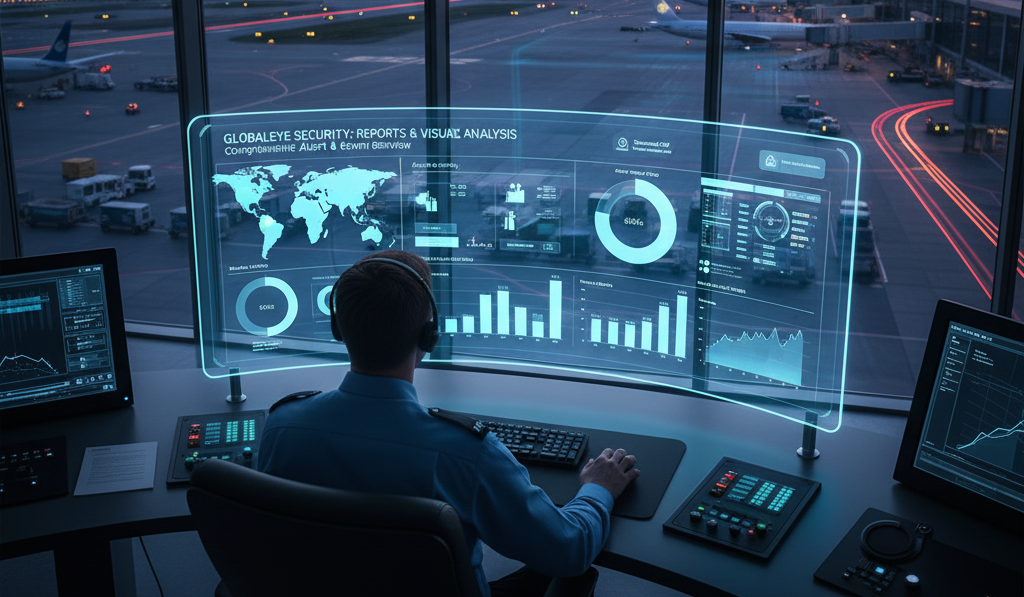Automation and end-to-end passenger traceability throughout their airport journey
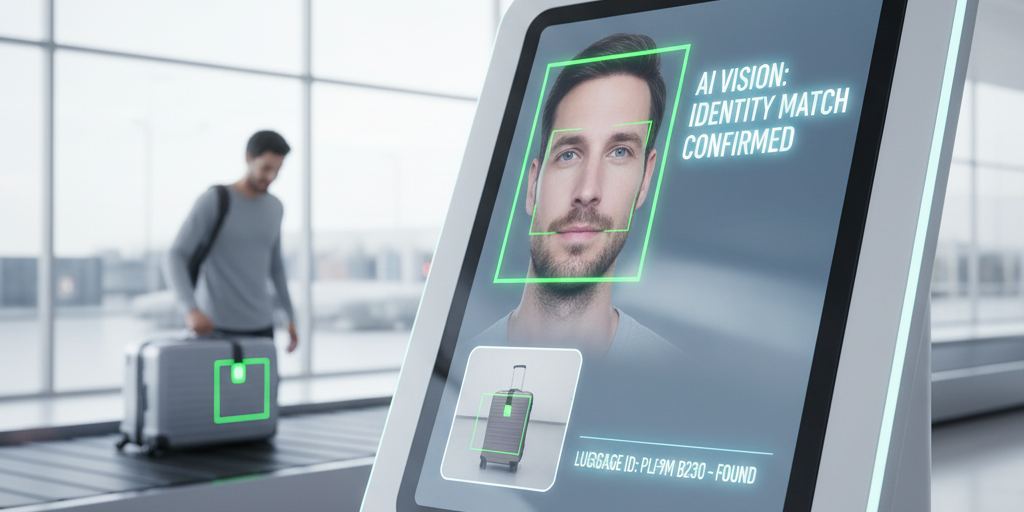
Uses real-time data and AI to monitor movement, reduce congestion, and optimize resource allocation across key zones.
Centrally controlled digital signs guide passengers based on real-time data—reducing crowding by redirecting travelers to less busy checkpoints and gates.
Minimizes lost luggage incidents with AI vision's picture match ensuring timely identification and smoother baggage handling.
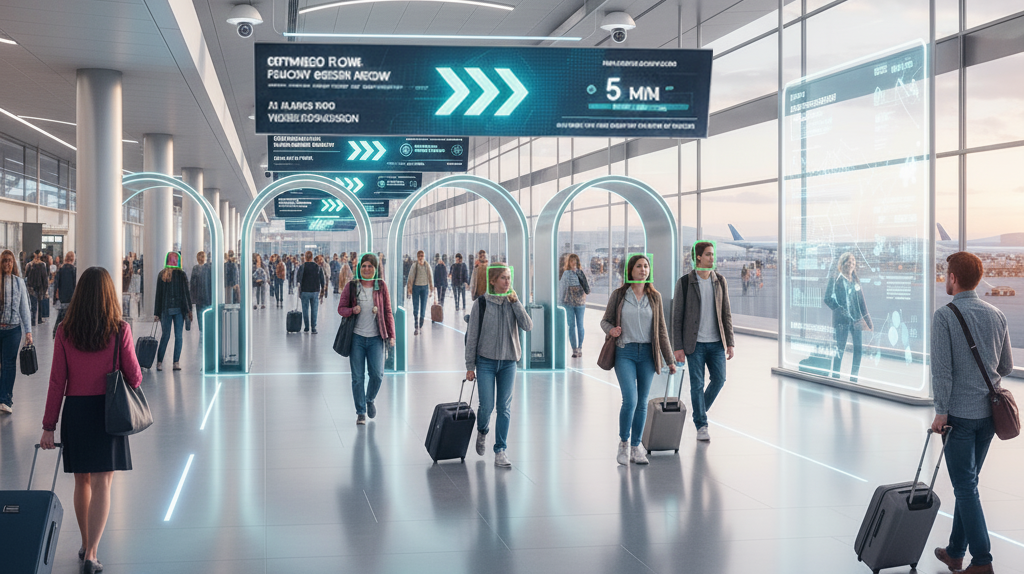
The Airport Management System will utilize real-time data from AI smart cameras, the Passenger Identity Management module, and Wi-Fi/BLE sensors to efficiently guide passengers to the appropriate security gates.
Smart signage integrated with the system will dynamically manage passenger flow, directing travelers to designated gates to prevent bottlenecks and overcrowding.
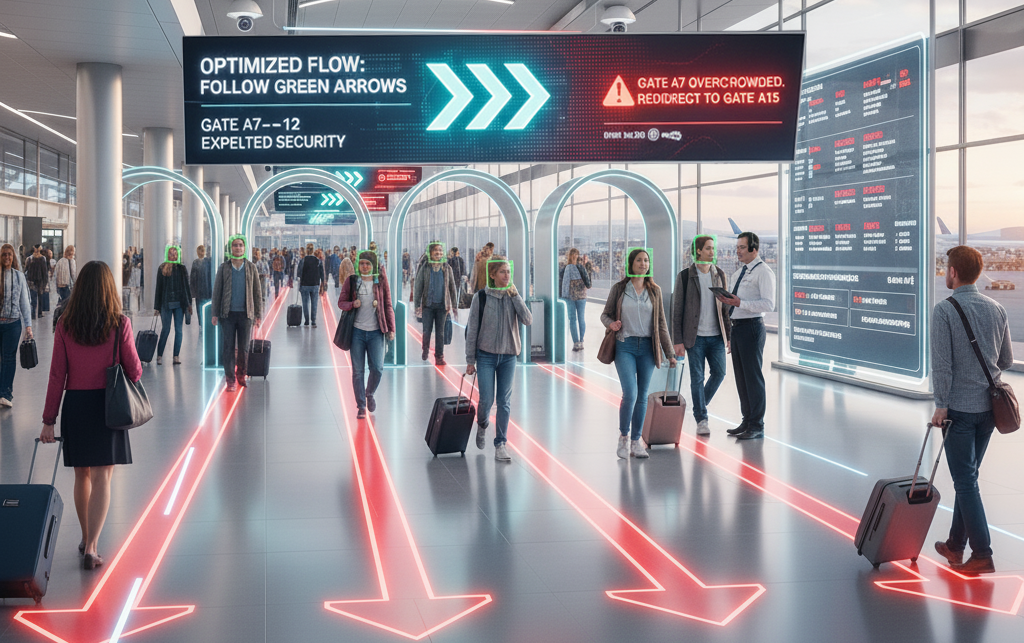
Any time the system will detect passengers are lining up and the que going over the predefined threshold, the system will automatically update the Dynamic Signs and have the people re direct to another gate at the same time notifying the operations staff.
This is applied throughout the terminal from security check line to the check-in counters and boarding gates.
Throughout the terminal, smart screens connected to the Airport Management System will provide clear, real-time guidance from drop-off to the boarding gate.
These displays will show the latest information on gate or terminal changes, flight delays, and cancellations, as well as direct passengers to helpdesks for rebookings or adjustments to their travel plans when needed.
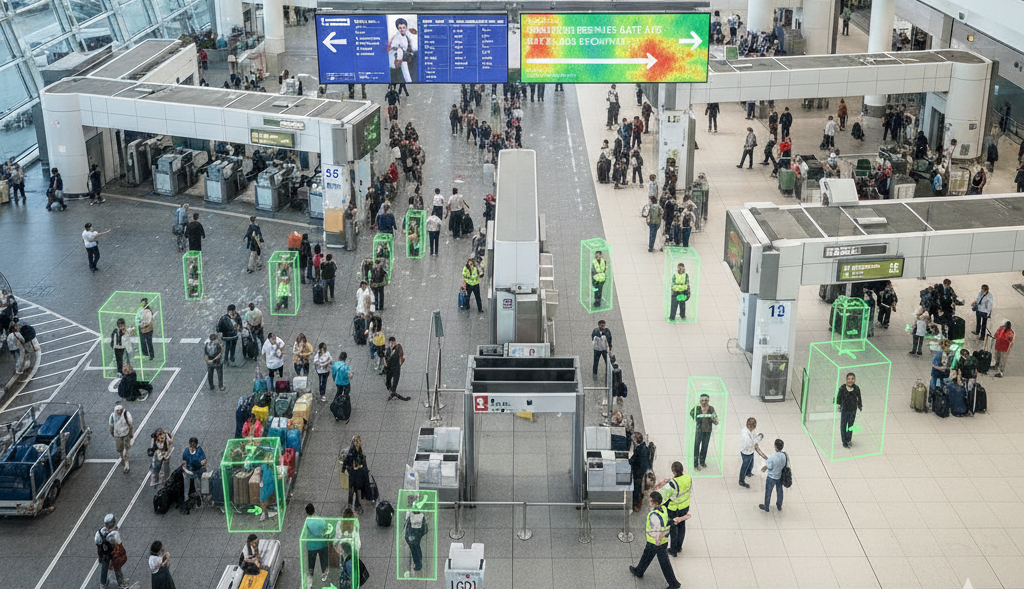
With its integrated modules, the system provides operations staff with a complete view of passenger flow from the curb to the boarding gate.
Real-time heat maps will monitor passenger flow, proactively alert operations staff, and update dynamic signage to reroute or divert passenger traffic to different queues as needed.
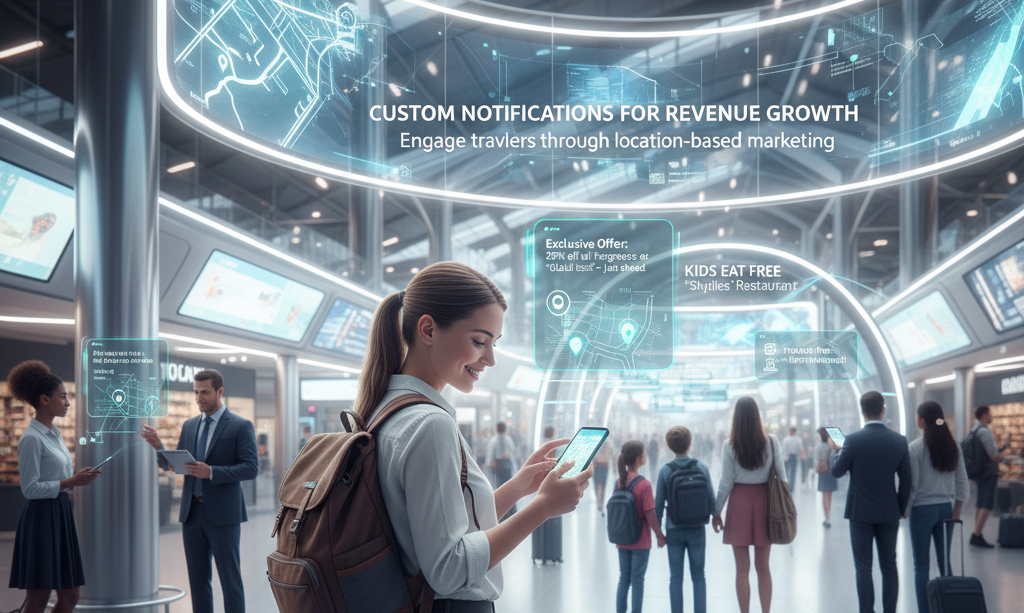
Machine learning models will analyze arrival and departure data, along with aircraft type, to accurately forecast daily passenger flow.
Engage travelers through location-based marketing by leveraging real-time passenger location data within the terminal to deliver personalized and timely offers. As passengers move through different zones—such as retail areas, duty-free shops, or restaurants—the system can automatically send targeted notifications to their mobile devices.
At the time of check-in, AI Vision cameras will capture multiple-angle images of each piece of luggage in a single shot. These images will be linked to the passenger and their corresponding tag numbers.
In the event of lost luggage with damaged tags, the system can still identify and match the luggage to its rightful owner through photo search, using the digital records captured during the check-in process.
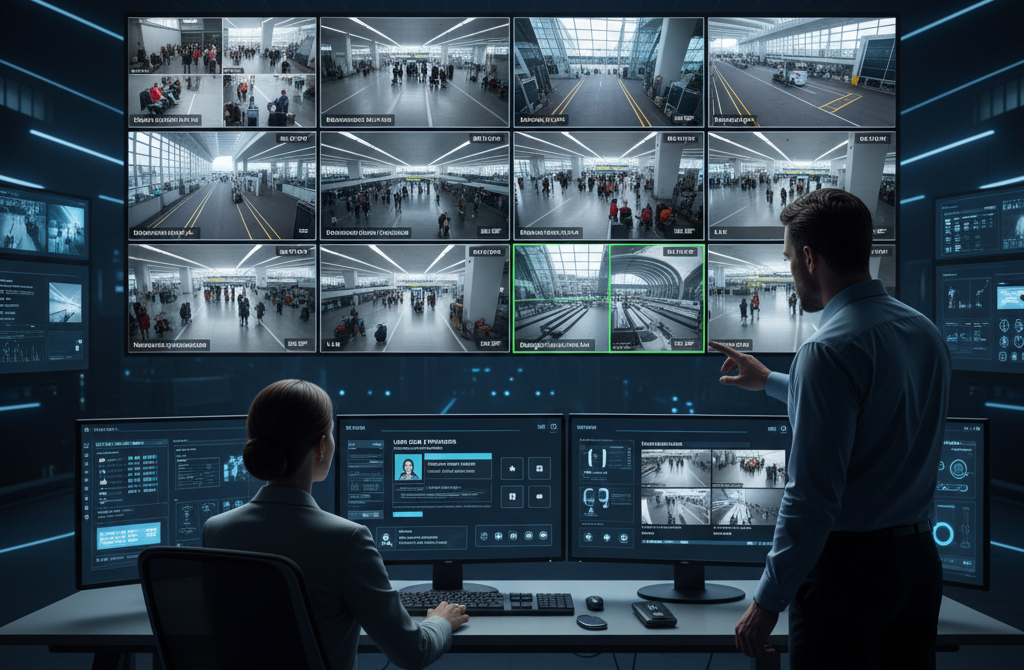
Users can personalize their camera feeds on the main dashboard, selecting areas and locations to monitor.
Create custom video walls and arrange cameras in flexible grid layouts (e.g., 2x2, 4x4)
Group cameras by location or function (e.g., Boarding lounge, Baggage Claim) for easier zone-based monitoring.
Admins can assign user roles and privileges, granting access to camera feeds based on responsibilities.
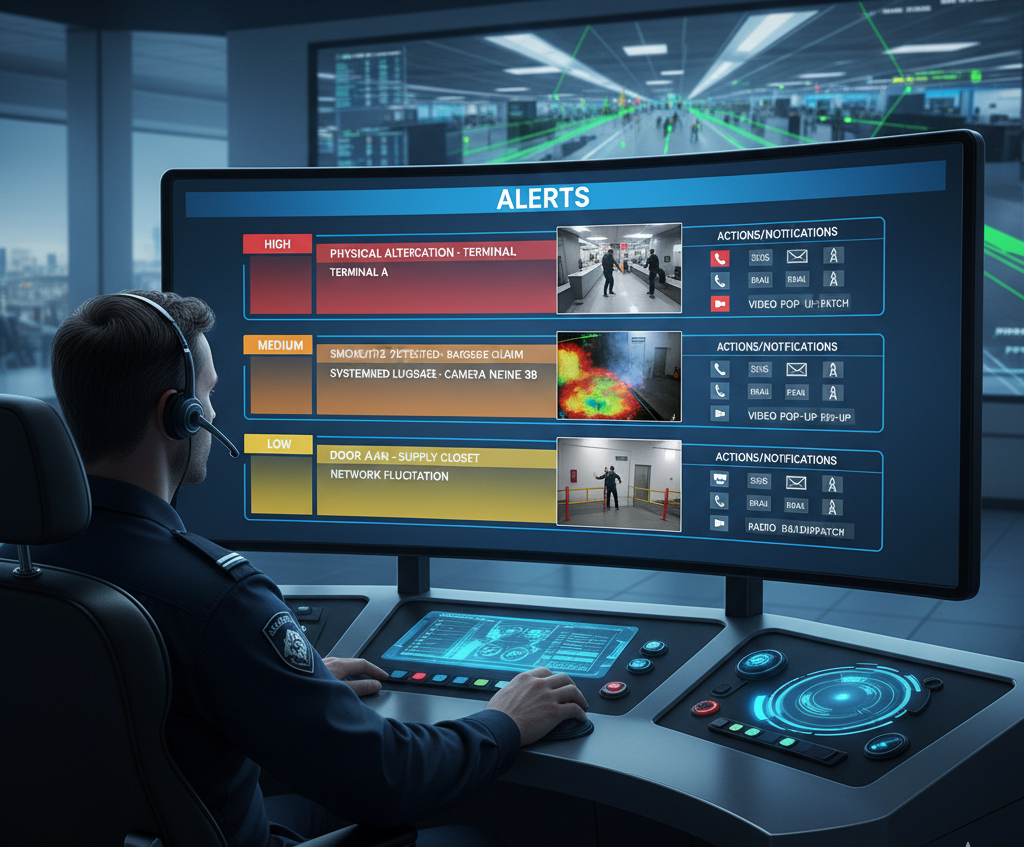
Security teams can configure alerts on the dashboard with specific priority levels.
Examples include a physical altercation in the terminal, detection of smoke/fire, or an unauthorized person entering a secure zone.
Notifications and actions can be tailored for each alert, with communication via video pop-ups, SMS, email, or radio dispatch.
Users can set thresholds for operational metrics, such as passenger wait times at security checkpoints or baggage claim.
If wait times exceed acceptable limits, notifications are sent to the appropriate staff for action.
Alerts can also be triggered for abnormal events, like an unusually high number of unclaimed bags, with updates sent by SMS and email to the concerned staff.
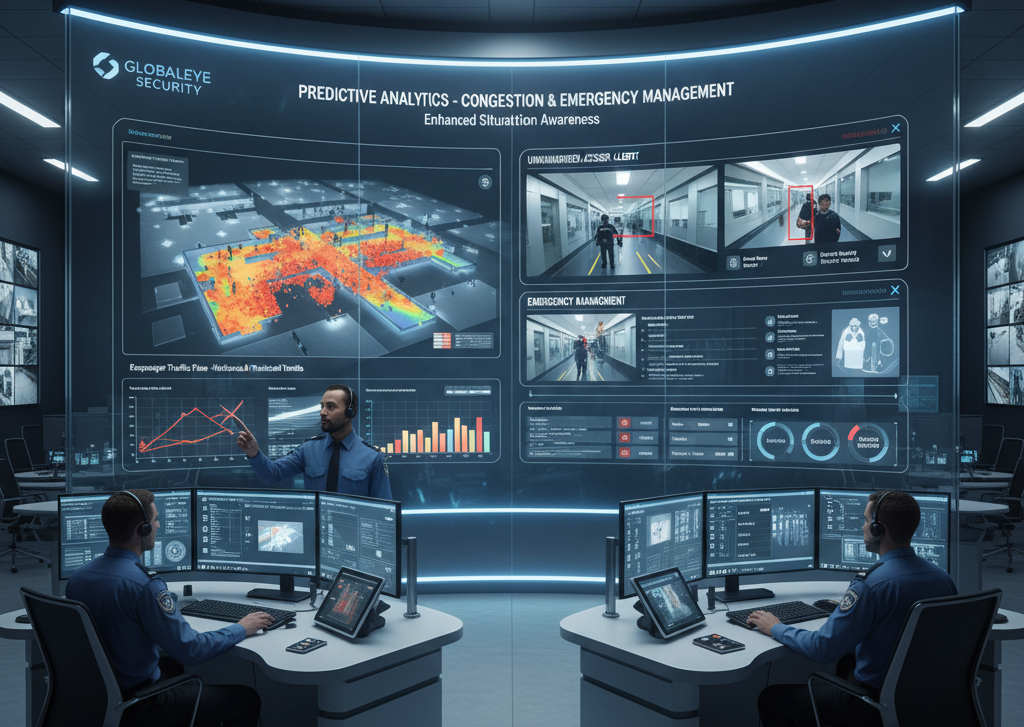
Aggregates video data to uncover patterns and trends, supporting strategic decision-making for congestion management.
Enables proactive preparation for expected crowds by analyzing building occupancy and passenger traffic data.
Enhances situational awareness through real-time alerts, allowing security operators to respond to developing emergency situations, such as unauthorized access or loitering in sensitive areas.
